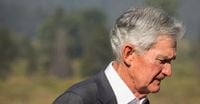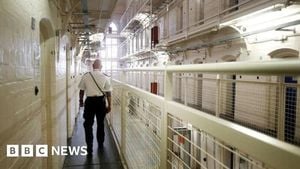All eyes are on Jackson Hole, Wyoming, this Friday as Jerome H. Powell, the chair of the Federal Reserve, prepares to deliver what promises to be a pivotal—and final—address at the annual economic symposium hosted by the Federal Reserve Bank of Kansas City. The stakes could hardly be higher: the U.S. central bank finds itself at a crossroads, navigating the choppy waters of persistent inflation, a softening labor market, and mounting political pressure from the White House. What Powell says in the shadow of the Teton Range will reverberate not just through financial markets, but through every corner of the American economy.
For Powell, this speech marks the end of an era. His term as Fed chair concludes in May 2026, and this Jackson Hole appearance is his last in the role. According to NPR, the timing is especially sensitive, coming just three and a half weeks before the Fed’s next policy meeting in September—when a crucial decision on interest rates is due. Investors, economists, and politicians alike are eager for any hint about whether the central bank will finally cut rates, or hold steady in the face of stubborn inflation.
But don’t expect Powell to tip his hand too easily. Joe Brusuelas, chief economist at RSM, told NPR, “I wouldn’t hold my breath waiting for Jay Powell to tip his hand on whether the Fed is going to cut rates.” The decision, Brusuelas added, is “far closer to a coin flip than what’s being commonly acknowledged.”
Inflation remains a thorn in the Fed’s side, still running above the bank’s 2% target. President Trump’s tariffs on imports have thrown additional fuel on the fire, raising concerns that prices could climb even higher. As Dan Kitwood’s Getty Images photo of stacked shipping containers at the Port of Southampton illustrates, global trade tensions are not just abstract policy debates—they have tangible effects on American consumers’ wallets.
Yet, the labor market is sending its own warning signals. The latest jobs report from the Labor Department showed that employers added fewer jobs in July than expected, and earlier gains in May and June were largely revised away. As reported by The New York Times, “the labor market also looks increasingly fragile, with monthly jobs growth slowing nearly to a halt this summer.”
This dual challenge—rising inflation and weakening employment—means the Fed’s two mandates, stable prices and maximum employment, are now pulling in opposite directions. Powell’s speech is expected to outline how the central bank will balance these competing risks. As James Clouse, a former deputy director at the Fed, put it, “Exactly how they conduct policy in this environment is just very difficult and involves weighing the cost of inflation over the longer run versus the near-term costs of an economy that is weakening.”
The tension is not just economic, but political. President Trump has been anything but subtle in his demands for lower interest rates, going so far as to publicly criticize Powell and even calling for the resignation of Fed Board Governor Lisa Cook over unproven allegations. The pressure on the Fed to lower borrowing costs has reached a fever pitch, with Trump arguing that high rates are holding back growth and making government debt more expensive. According to The New York Times, “The president wants interest rates that are around three percentage points lower than the current range of 4.25 percent to 4.5 percent.”
Fed independence, long considered a bedrock of economic stability, is now under direct assault. Powell, for his part, has repeatedly emphasized the necessity of keeping monetary policy free from political interference. “Having an independent central bank has been an institutional arrangement that has served the public well,” Powell said last month, as quoted by NPR. “And as long as it serves the public well, it should continue and be respected.” Brusuelas echoed this sentiment, warning, “If you no longer let the Fed set the policy rate independently, we’re not only going to have 3-4% inflation. We’re going to have much higher inflation. We know who’s going to bear the burden of those transition costs. It’s the middle class. It’s the working class. And the working poor.”
Adding to the complexity, Powell is expected to address changes to the Fed’s long-term policy framework—a five-year review that could mark a shift away from the 2020 approach. That strategy, adopted in the wake of the pandemic, allowed the Fed to tolerate periods of higher inflation to support job gains, especially for those who often struggle to find work. But after the painful price hikes of recent years, the central bank appears poised to revert to a more traditional inflation-targeting regimen, focusing on preventing inflation from exceeding 2% rather than averaging it over time.
“We’ve now all gone through and experienced what high inflation and high prices look like,” observed Sarah Binder, a senior fellow at the Brookings Institution, in comments to NPR. “That’s going to change how people think.”
The lessons of the recent past loom large. In 2021, the Fed’s decision to call pandemic-era inflation “transitory” proved costly, as inflation soon surged to a four-decade high. The institution responded by raising rates sharply and holding them high to bring inflation back down, with mixed results. Raghuram Rajan, a former governor of the Reserve Bank of India, told The New York Times, “In hindsight, it was a mistake. This was a proactive measure to try and boost the effectiveness of the Fed’s armory, but unfortunately it came just when the problem changed.”
Now, with the labor market softening and inflation still elevated, the Fed faces what some analysts have called a potential “Wile E. Coyote” moment—a sudden collapse in employment if businesses start shedding workers en masse. Kris Dawsey, head of economic research at the D.E. Shaw Group, explained, “In real time, the Fed can’t be sure of what’s really driving slower monthly jobs growth. Even if you think that a lot of it is coming from a supply-side shock, you can’t be entirely certain of that, and you’ve got to be reacting in a way that’s putting some weight on the slowdown being driven by the demand side.”
The coming months will test the Fed’s credibility and resolve. Esther George, former president of the Kansas City Fed, cautioned, “It’s too soon to signal that your policy isn’t going to be aimed at bringing that inflation rate down.” If the Fed cuts rates and then has to quickly reverse course, Rajan warned, “That’s a serious blow to credibility. You can wait and watch, but you can’t turn on a dime in terms of policy. That’s the prevailing mantra of central banks.”
Meanwhile, President Trump is already searching for Powell’s successor, with loyalty and a willingness to support lower rates at the top of his list. The next Fed chair will inherit not just the economic challenges of the moment, but also the delicate question of how to maintain the institution’s independence in the face of unprecedented political scrutiny.
As Powell takes the stage at Jackson Hole, he does so knowing that every word will be parsed, every gesture scrutinized. The future direction of U.S. monetary policy—and perhaps the stability of the broader economy—hangs in the balance.




